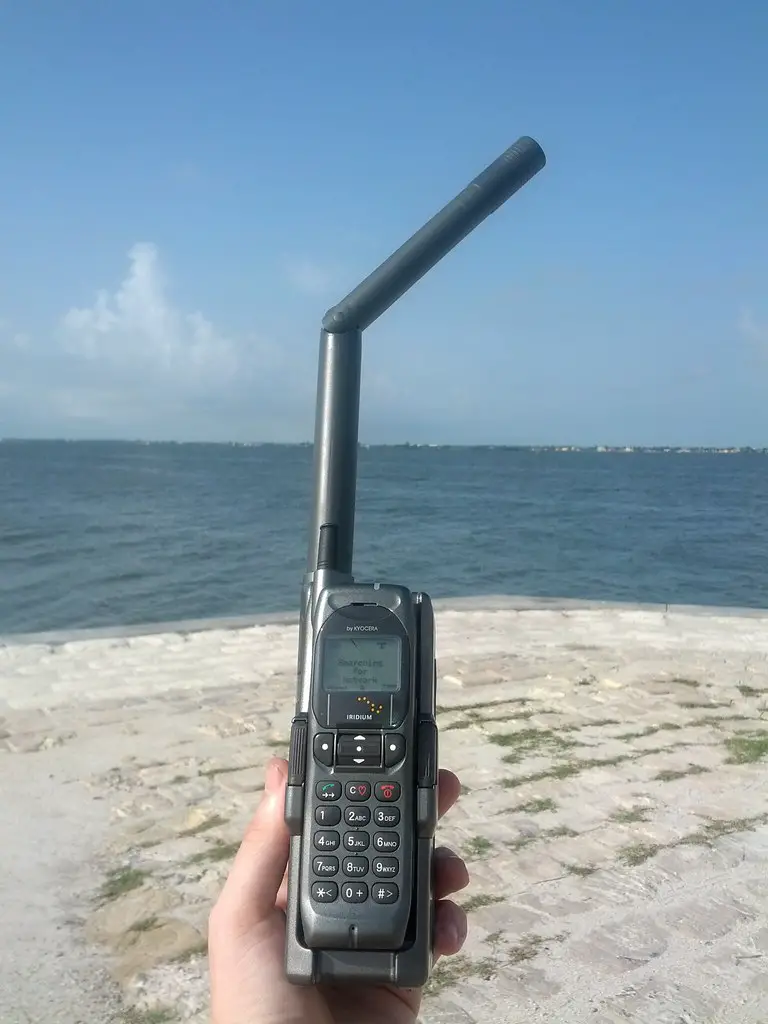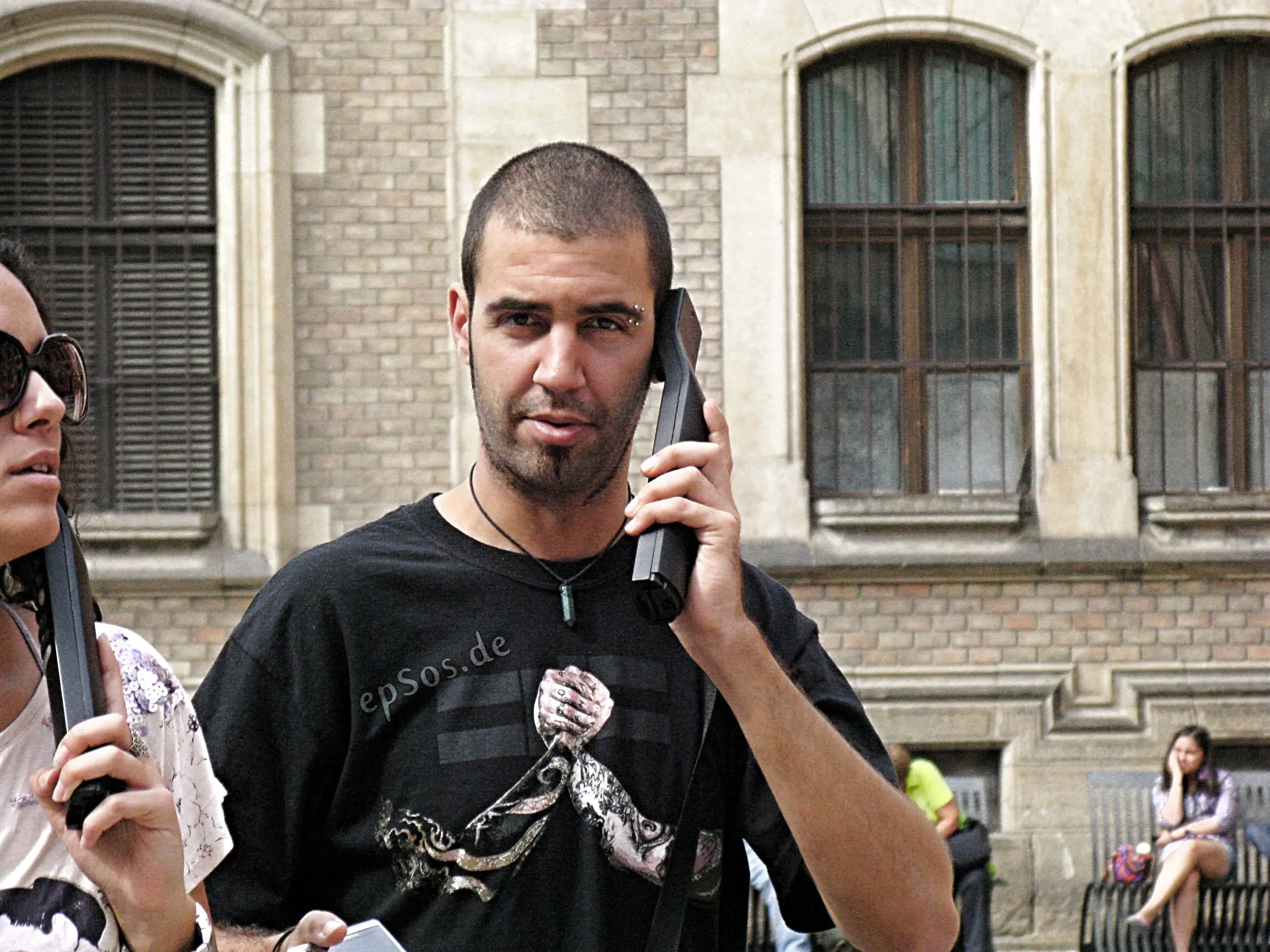Satellite phones, also known as satphones, are devices that provide communication even in the most remote places. These phones use satellites to send and receive signals, allowing calls from anywhere on Earth. So, knowing how to call a satellite phone is essential for adventurers, sailors, and those who work in faraway regions.
To call a satellite phone, you need the right dialling sequence. These differ from landlines or mobile phones. Each provider has their international code. Not all regular phone numbers can be dialled directly on a satellite phone.
You’ll need to determine the correct dialling sequence. It may include special country codes for certain regions or countries. Double-check these codes before making a call to ensure connection.
When ready, dial the full sequence as directed by your service provider. Wait for the connection to make and then talk.
Satellite phones enable global communication in places with no cellular networks. Explorers, sailors, and those who want peace of mind can benefit. So, learn how to call a satellite phone for convenience and confidence on your adventures! Being prepared makes staying connected much easier.
Understanding Satellite Phones
To understand satellite phones, dive into the world of satellite communications with this section on ‘Understanding Satellite Phones.’ Discover what a satellite phone is and explore how it works. Uncover the secrets behind seamless communication even in remote areas.
What is a satellite phone?
Satellite phones are a technological marvel. They offer connectivity in even the remotest of areas, where traditional means fail. Instead of relying on ground-based towers, these devices work through a network of satellites miles above the Earth’s surface. They provide reliable voice and data, no matter the location.
One of satellite phones’ unique qualities is that they bypass terrestrial infrastructure limitations. This makes them invaluable for individuals exploring uncharted territories, or working in isolated environments such as deep sea exploration, military operations, or scientific expeditions.
Plus, they can be a lifeline during emergencies. When conventional means fail due to natural disasters or crises, having access to a reliable connection is crucial for survival and rescue operations. Satellite phones offer peace of mind by keeping you connected even in the toughest of situations.
In this day and age, not having a satellite phone can mean missing out on important opportunities. Staying connected is essential, whether you’re on a business trip or an adventure-filled expedition. Don’t miss out – embrace this revolutionary technology and stay connected with the world through the power of satellite phones!
How does a satellite phone work?
Satellite phones connect to orbiters, so users can call anywhere. These devices link up with low Earth orbit (LEO), medium Earth orbit (MEO) and geosynchronous Earth orbit (GEO) satellites.
The phone sends signals to the closest satellite. Then, these signals reach an earth station or gateway and are routed through a ground-based telecommunications network. The call is then connected to its destination. All of this happens within seconds. Satellite phones are vital for those in remote areas with no access to standard cellular networks.
Satellite phones are different from regular smartphones. They use satellites for transmission/receiving, instead of terrestrial cell towers. This allows them to offer coverage even during disasters when landlines and mobile networks may be cut off.
It’s crucial to realise that obstructions, like tall buildings or thick foliage, can affect signal strength. To communicate successfully, users must have a clear view of the sky.
NASA made the first experimental satellite phone call in 1974 using the ATS-6 satellite. This was an important moment in global communication.
Steps to Call a Satellite Phone
To call a satellite phone, ensure you have a satellite phone and check signal strength and coverage. Dial the satellite phone number and make the call.
Ensure you have a satellite phone
To have a satellite phone, you need to do the following:
- Check out different satellite phone providers and compare their services and coverage.
- Pick a provider that offers the coverage you need for your travels.
- Buy or rent a satellite phone from the provider.
- Register your phone to activate it.
- Make sure you have enough prepaid minutes or a postpaid plan to make calls.
- Learn how to use the phone and its features.
With a satellite phone, you can communicate in remote areas. However, not all phones are equal. Consider your needs and research to find the best option.
My friend John had an experience with a satellite phone. He was on a hiking trip in the Himalayas and got stuck due to a blizzard. There was no way to contact anyone. Fortunately, he had a satellite phone and was able to call emergency services. This shows the importance of having a satellite phone when you’re out in the wild.
So, if you’re going to a remote area don’t forget to take a satellite phone!
Check signal strength and coverage
Before making a call on a satellite phone, it’s essential to check the signal strength and coverage. Do this by:
- Standing in an open area clear of tall buildings or trees.
- Making sure the satellite phone is charged and on.
- Checking the signal strength indicator on your phone’s screen for at least a moderate signal.
- If the strength is weak, move to a higher spot or different position to improve reception.
- Consult the coverage map provided by your satellite phone service provider to be sure you’re within their network coverage area.
Take into consideration that weather can affect the quality of the satellite phone signal. Heavy rain, snow, or storms can weaken or disrupt the signal. Furthermore, NASA reports that solar flares can interfere with satellite communications, possibly impacting the signal strength and coverage of satellite phones.
Dialling the satellite phone number
Making a call to a satellite phone may appear complex. But with the correct steps, it can be done with ease! Here’s a useful guide to dialling a satellite number:
- Get the satellite phone number: Speak to the person you want to call and ask them for their satellite phone number. This number is different from typical phone numbers and typically starts with a country code followed by some digits.
- Ensure a clear view of the sky: Before dialling, make sure you are in an open space with an unobstructed view of the sky. The optimal signal is achieved with a direct line of sight to the satellite.
- Dial international access code: Start by dialling the international access code, usually “00” or “+”. This enables you to make an overseas call.
- Type the country code: After the international access code, enter the relevant country code for the location of the satellite phone. Each nation has its unique code.
- Input the satellite phone number: After entering the country code, input the satellite phone number provided by the person you are calling.
- Wait for connection: After inputting the codes and numbers, wait for the call to connect. It may take some time as satellites establish contact with your device.
It’s worth bearing in mind that calling a satellite phone can be costly due to airtime and other fees related to satellite communication.
A fascinating fact about satellite phones is that they were initially created for use in military and aviation sectors during World War II, with Bell Labs being one of the pioneers in this technology.
Making the call
Calling with a satellite phone? Here’s how! It’s simple.
- Dial the country and area code. Remember, it’s usually international.
- Enter the satellite phone number. Double-check accuracy!
- Wait for the connection. This may take a few moments.
- Speak clearly and watch the pace. Satellite connections can have delays due to signal latency.
- End the call politely. Thank them and hang up.
Remember, satellite calls involve unique details. Global coverage is possible in remote areas without cellular net infrastructure. Did you know? There are over four thousand active satellites in orbit now, providing communication services like satellite phones and more!
Troubleshooting Tips
To troubleshoot issues with your satellite phone, with its poor signal and common problems, here are some valuable tips. Learn how to tackle the challenge of poor signal strength, understand the common issues that may arise, and discover effective solutions to resolve them.
Dealing with poor signal
Having trouble with your signal? No worries, we’ve got your back! Here’s a guide to helping you cope with bad signal:
- Check your device. Make sure your device is in good condition and not causing any issues. Check for updates or settings which may need adjusting.
- Location is important. Being indoors or surrounded by objects can weaken the signal. Try to move closer to a window or open area to enhance the signal.
- Network selection. If your mobile device has a poor signal, try choosing a different network from the available options in your settings. Sometimes, a change can give a better connection.
- Extra equipment. If you have regular signal problems, investing in signal boosters or Wi-Fi extenders can help.
You need patience and troubleshooting to solve signal issues. By following these steps, you’ll be on the way to better connection quality.
Remember, the weather or network traffic can also affect signal strength. Look out for temporary disruptions which may impact the signal.
Let me tell you a real-life story – a friend of mine moved into a house with almost zero cellular reception. Despite trying various solutions, nothing worked. So, they bought a cell signal booster designed for their carrier’s frequency bands. The result? Their terrible reception transformed into reliable coverage all over their home.
So, even if signals seem lost, there are always solutions!
Common issues and how to resolve them
- Network connectivity problems?
- Restart your router.
- Check cables for damage.
- Contact your ISP.
- Compatibility issues?
- Update the software to the latest version.
- Check system requirements.
- Seek help from the software manufacturer.
- Slow computer performance?
- Clean hard drive.
- Run a malware scan.
- Upgrade hardware.
- Printer not working?
- Clear paper jams.
- Check if connected properly.
- Reinstall printer drivers.
- Battery draining quickly?
- Reduce screen brightness & timeout settings.
- Close unnecessary background apps.
- Replace the old battery.
Plus, clean dust from hardware components like fans & vents for improved computer performance (Source: PCWorld).
Conclusion
Satellite phones provide an efficient way to stay connected in remote areas. They connect through orbiting satellites and can even be used in isolated locations. To call a satellite phone, enter the international dialling code followed by the number. But remember that calling rates are usually higher than usual.
In some cases, a satellite phone may even save a life. Like Peter, stuck in a mountain range with no other means of communication. But his trusty satellite phone helped him get rescued.
To make the most of a satellite phone, choose an open area with clear visibility of the sky. This increases the chances of a successful connection, despite weather or terrain. So, calling a satellite phone is not as hard as it seems!
Frequently Asked Questions
Q1: How do I call a satellite phone?
A1: To call a satellite phone, you need to dial the country code followed by the satellite phone number. The country code and phone number can usually be found in the user manual or by contacting the satellite phone service provider.
Q2: Can I call a satellite phone from a regular mobile or landline?
A2: Yes, you can call a satellite phone from a regular mobile or landline phone. However, keep in mind that satellite phone calls can be more expensive than regular calls, so it’s important to check with your service provider for any additional charges or international calling plans.
Q3: What are some key things to consider before calling a satellite phone?
A3: Before calling a satellite phone, ensure that you have a strong cellular network or landline connection. Also, check if your service provider supports international or satellite calling. Lastly, be aware of any extra charges or rates associated with satellite phone calls.
Q4: Are there any special dialling codes or instructions for calling a satellite phone?
A4: In most cases, you will need to dial the country code followed by the satellite phone number, just like placing an international call. However, it is recommended to refer to your specific satellite phone service provider for any specific dialling codes or instructions.
Q5: Can I receive calls on a satellite phone while travelling abroad?
A5: Yes, you can receive calls on a satellite phone while travelling abroad. However, international roaming charges may apply depending on your service provider. It is advisable to check with your provider for any additional requirements or charges.
Q6: What are some alternative methods of communication for remote areas without satellite phone coverage?
A6: In remote areas without satellite phone coverage, alternative methods of communication include using radio communication devices, satellite messengers, or portable Wi-Fi hotspots with cellular data services. These options can help you stay connected even when satellite phone coverage is unavailable.




